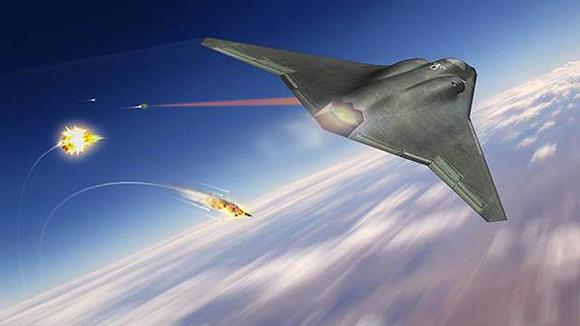Northrop Grumman has released the first design drawings for future sixth-generation fighters for the Air Force and the US Navy. The US Air Force's FX program aims to recapitalize the entire fleet from superiority and aerial domination, while the Navy's A-XX program should produce a replacement for the Super Hornet. The Pentagon hopes to put the new fighter on the 2035 line, although the budget is unlikely to allow the development of two new platforms.
The only thing certain is that the 2035 represents the point of no return. Just think of the Raptor, in the 2035 will have more than thirty years of service: hence the need to start immediately the development of the new weapon system.
We know that the US defense industries have been working on the new sixth generation fighter for some time. In addition to the higher speed in supercruising and the now obvious capacity of armament brought internally, the new fighter could also have a certain self-healing capacity. This feature would allow the aircraft to remain in operational theaters, even after suffering severe damage. The idea of a self-healing system is not new. In the 2008, the aerospace engineers of the University of Bristol, they developed this technology by taking inspiration from plants and animals. The coating, placed in some vulnerable parts of the aircraft, is composed of two resins: an epoxy and a hardener. The concept is simple: by striking the area covered by the material, the latter emerges from the entrance hole of the bullet or the splinter of the exploded head. The two resins, combining with each other, seal the affected part, allowing the aircraft to continue the mission despite the damage suffered.
Then the sixth generation fighters could be equipped with laser weapons. Also in this case there is a precedent. The 29 September of the 2008, Northrop Grumman delivered to the USAF the first model of the "Vesta II", a high-energy laser capable of breaking down infrared-guided missiles. The Vesta II has already been tested on an F-15. The experience gained with the Boeing YAL-1 will be crucial for the study of the new laser aviation weapons being transported.
But the reasoning, in addition to the specifics of the fighter, goes much further. We must consider, for example, the evolution (and role) of the Unmanned Combat Air Vehicle or UCAV. We must ask ourselves the evolutionary and self-conscious degree that between now and forty years of age they will reach the drones and if they will be relegated to "simple" expendable remote-controlled devices. If Air Force and Navy were able to get the green light for Analysis of Alternatives (AOA) or Alternative analysis (tool used by the United States Armed Forces to preliminarily analyze the alternatives) for the two F / A-XX programs (for the Navy) and the Next Gen Air Dominance (for aviation) as early as next January, considering the ten-year development, they could fly the first prototypes with 2025 and 2030 Initial Operational Capacity estimated for the 2035. But this, as repeatedly stated, is only the best of hypotheses. The problem is purely economic.
The United States is still (and will be for years) shocked by the costs of the F-35 program and the new fighters will not be based solely on the ability to provide the best technology for the theaters of the future, but on the possible existing and future threats. For Northrop, the two fighters should be different, while sharing the same technology and some features.
The concept for the Navy, for example, includes two engines unlike the single advanced propulsion system for the Air Force. Northrop seems to focus on a turning wing with low observability. If so, it would be wise to understand the path taken by the Northrop designers. The fighters, in fact, do not have the same wingspan as a bomber and the absence of vertical tail flaps cause serious problems of instability at low speeds. To date the possible solution for this inconvenience remains classified.
Finally, there is also a possible alternative based on the F-35 cell as the basis for the future sixth generation fighter. To date, it remains a proposal that does not seem to have been greeted with enthusiasm by the Air Force (the F-22 is faster and performant at a much higher level than the slower and less agile F-35). Beyond the future projects, the idea of modifying the F-35 cell and using it as a base for future aircraft with and without crew, has obtained some consensus even if it is necessary to analyze the different operating specifications. The requirements for missions carried out by the Air Force and the US Navy require different solutions, but the needs will have to face the available budget.
It is clear that future financial resources will force technology and investments to be aligned with different operational capabilities. In this context, modifying a cell like that of the F-35 could save time and money, considering the role of air superiority assigned to the Air Force (after the end of Navy Advanced Tactical Fighter).
Lockheed Martin has long recognized that experimental programs on F-35 cells are underway.

(photo: Northrop Grumman)












